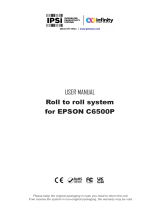
3
Table of Contents
1 Important Information ............................................................................................................................4
1.1 Instructions ...............................................................................................................................................4
1.2 General Safety Instructions ......................................................................................................................4
1.3 Protective Devices ...................................................................................................................................5
1.4 Handling Electricity ..................................................................................................................................5
1.5 Procedure in Case of Accidents ..............................................................................................................5
1.6 Environment .............................................................................................................................................5
2 Tools ........................................................................................................................................................6
3 Maintenance ...........................................................................................................................................7
3.1 Cleaning by the Operator .........................................................................................................................7
3.2 Cleaning the Label Sensor ......................................................................................................................7
4 Replacing Assembly Units .................................................................................................................... 8
4.1 Replacing the Printheads .........................................................................................................................8
4.2 Replacing the Print Rollers .....................................................................................................................10
4.3 Replacing the Transport Rollers ..............................................................................................................11
4.4 Replacing the Slipping Clutches ............................................................................................................12
4.5 Replacing the Brake Shoe at the Label Unwinder .................................................................................14
4.6 Replacing the Label Sensor ...................................................................................................................15
4.7 Replacing the PCB CPU ........................................................................................................................ 16
4.8 Replacing the Power Supply Unit ...........................................................................................................17
5 Adjustments .........................................................................................................................................18
5.1 Measuring and Adjusting the Winding Torques ......................................................................................18
5.1.1 Measuring the Winding Torques .......................................................................................................18
5.1.2 Adjusting the Winding Torques .........................................................................................................21
5.2 Adjusting the Brake at the Label Unwinder ............................................................................................22
5.3 Adjusting the Label Feed .......................................................................................................................23
5.4 Adjusting the Printing Mechanism ..........................................................................................................24
5.4.1 Preparing the Printer for Adjustment ................................................................................................24
5.4.2 Adjusting the Printhead Position.......................................................................................................25
5.4.3 Adjusting the Printhead Pressure .....................................................................................................26
5.4.4 Adjusting the Transfer Ribbon Feed Path.........................................................................................27
5.4.5 Final Test .......................................................................................................................................... 27
5.5 Adjusting the Belt Tension ......................................................................................................................28
5.6 Adjusting the Magnetic Clutches ............................................................................................................29
5.7 Adjusting the Ribbon Saver ....................................................................................................................30
6 Troubleshooting and Error Treatment ................................................................................................31
6.1 Failure of Device Functions ....................................................................................................................31
6.2 Hardware Faults .....................................................................................................................................32
7 Block Diagram ......................................................................................................................................33
8 Layout Diagram CPU ...........................................................................................................................34
9 Index ......................................................................................................................................................36




















